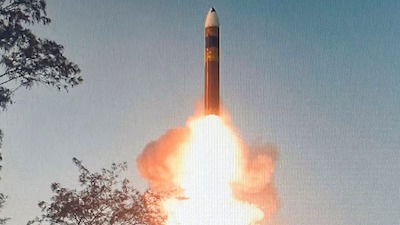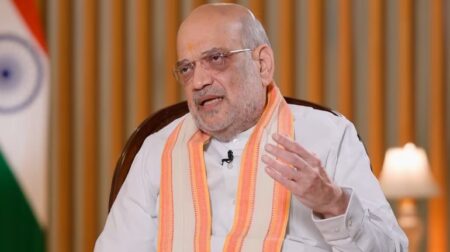India on Wednesday successfully test-fired its most advanced nuclear-capable missile, Agni-5, from the Integrated Test Range at Chandipur, Odisha. Conducted under the Strategic Forces Command, the launch met all technical and operational parameters and reaffirmed India’s commitment to a credible minimum deterrence, the Ministry of Defence said.
Developed by the Defence Research and Development Organisation (DRDO), Agni-5 is an intermediate-range ballistic missile with a range of over 5,000 km. What makes this test particularly significant is the validation of Multiple Independently Targetable Re-entry Vehicle (MIRV) technology, which allows a single missile to carry and strike multiple targets with nuclear warheads. This capability makes Agni-5 one of India’s most formidable strategic assets, designed to penetrate advanced missile defence systems while strengthening the country’s second-strike capability.
The missile is powered by a three-stage solid-fuel propulsion system, built with lightweight composite materials to improve efficiency and range. It can carry a nuclear payload of up to 1.5 tonnes and is launched from a road-mobile canisterised platform, enhancing mobility and operational readiness. Advanced navigation systems, combining gyroscope-based sensors with India’s NavIC and global GPS satellites, provide high accuracy over long distances, while new avionics and re-entry heat shields ensure performance in combat conditions.
Agni-5 is the latest in India’s missile arsenal that includes the shorter-range Agni-1 aimed at Pakistan, the medium-range Agni-2, and the longer-range Agni-3 and Agni-4 primarily designed to counter China. With the successful incorporation of MIRV technology, Agni-5 represents a major leap in India’s nuclear deterrence strategy, expanding its ability to engage multiple strategic targets simultaneously.
The test has raised concerns in Pakistan, where the Strategic Vision Institute (SVI) warned Prime Minister Shahbaz Sharif and Army Chief General Asim Munir that India’s growing missile capabilities pose serious risks to regional stability. The think tank also highlighted India’s accelerated missile development since joining the Missile Technology Control Regime in 2016 and noted that future Agni variants could extend their reach to 7,500–8,000 km, potentially covering cities like Beijing, Moscow and even Washington.
Looking ahead, DRDO is expected to continue refining the Agni programme with longer-range versions, enhanced MIRV payloads and bunker-busting capabilities to target fortified installations. With this successful test, India has signalled its intent to reinforce peace through strength, ensuring credible nuclear deterrence under its No First Use doctrine while maintaining strategic stability in a shifting regional and global security environment.
Sorry, there was a YouTube error.








